Structure of the Large Intestine
The large intestine is divided into several distinct regions, each with specific functions. The cecum is the first part of the large intestine and is a pouch-like structure that connects to the small intestine. The ascending colon travels upward on the right side of the abdomen, followed by the transverse colon, which runs horizontally across the abdomen. The descending colon descends on the left side of the abdomen, leading to the sigmoid colon, which connects to the rectum.Functions of the Large Intestine
1. Water Absorption: The large intestine reabsorbs water from the indigestible food material, helping to form solid feces. 2. Electrolyte Absorption: It also absorbs electrolytes such as sodium and potassium. 3. Feces Formation: The large intestine compacts and stores fecal matter before it is eliminated from the body. 4. Bacterial Fermentation: Beneficial bacteria in the large intestine ferment indigestible carbohydrates, producing vitamins and gases.Study Guide for the Large Intestine
To understand the large intestine thoroughly, students should focus on the following key points: 1. Anatomy: Learn the structure and location of the large intestine, including its segments and their functions. 2. Functions: Understand the specific roles of the large intestine in water and electrolyte absorption, feces formation, and bacterial fermentation. 3. Microbiota: Explore the role of gut microbiota in the large intestine and their impact on overall health. 4. Diseases: Study common disorders of the large intestine, such as irritable bowel syndrome, inflammatory bowel disease, and colorectal cancer. 5. Healthy Habits:.◂Biology Worksheets and Study Guides High School. Introduction to animals
Worksheet/Answer key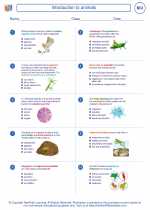 Introduction to animals
Introduction to animals  Worksheet/Answer key
Worksheet/Answer key Introduction to animals
Introduction to animals  Worksheet/Answer key
Worksheet/Answer key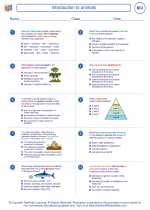 Introduction to animals
Introduction to animals  Worksheet/Answer key
Worksheet/Answer key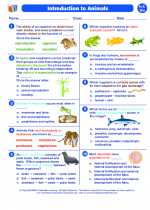 Introduction to animals
Introduction to animals  Vocabulary/Answer key
Vocabulary/Answer key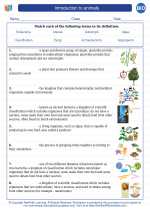 Introduction to animals
Introduction to animals  Vocabulary/Answer key
Vocabulary/Answer key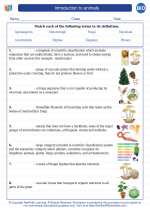 Introduction to animals
Introduction to animals  Vocabulary/Answer key
Vocabulary/Answer key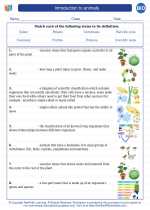 Introduction to animals
Introduction to animals 

 Worksheet/Answer key
Worksheet/Answer key
 Worksheet/Answer key
Worksheet/Answer key
 Worksheet/Answer key
Worksheet/Answer key
 Vocabulary/Answer key
Vocabulary/Answer key
 Vocabulary/Answer key
Vocabulary/Answer key
 Vocabulary/Answer key
Vocabulary/Answer key

The resources above cover the following skills:
Concepts of Life Science (SC1, SC2, SC3)
The student demonstrates an understanding of the structure, function, behavior, development, life cycles, and diversity of living organisms by describing the structure-function relationship